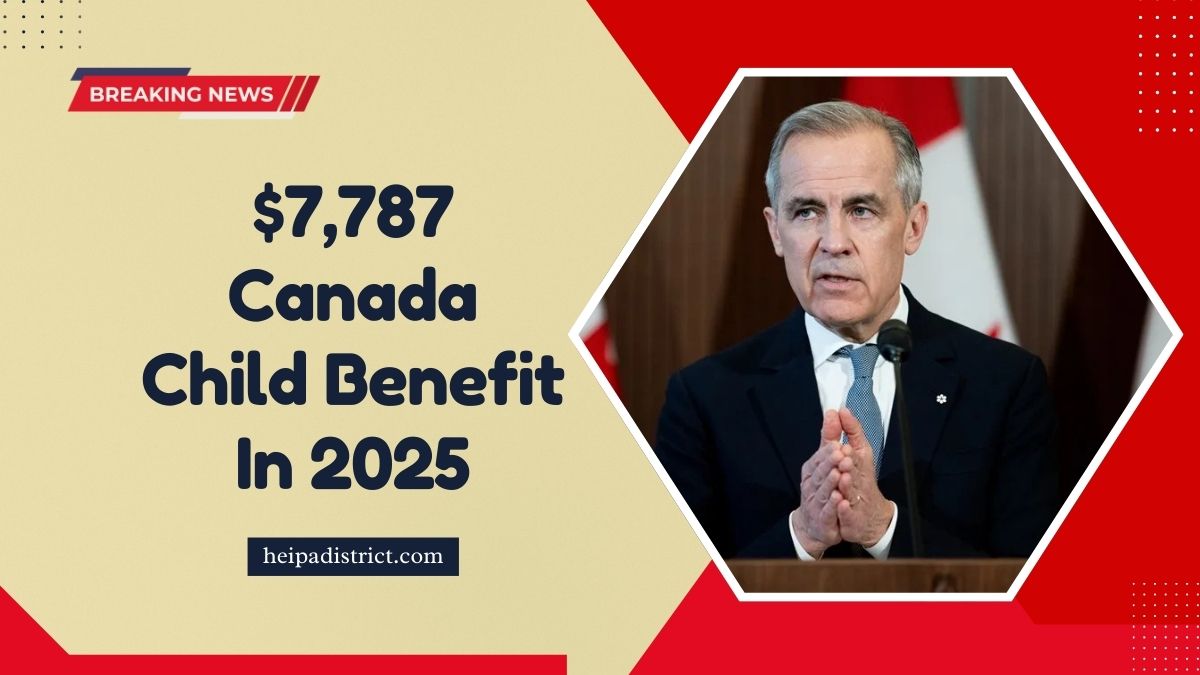$7,787 Canada Child Benefit In 2025 – Who Qualifies And How To Maximize Your Payment
The Canada Child Benefit (CCB) remains a cornerstone of Canada’s family support programs, and in 2025, eligible families can receive up to $7,787 per child under age 6.
For children aged 6 to 17, the benefit is $6,570 per year. This tax-free monthly payment is designed to help families manage the increasing costs of raising children in today’s economic climate.
If you’re wondering how much you could receive, when the payments will be issued, and how to apply, this guide has all the answers.
What Is the Canada Child Benefit (CCB)?
The Canada Child Benefit is a monthly payment from the federal government to families with children under 18. It is income-tested, meaning families with lower adjusted net incomes receive a higher amount.
The CCB is designed to support essential child-rearing costs, including education, nutrition, clothing, and activities.
CCB Benefit Amounts for 2025
| Child’s Age | Maximum Annual Benefit | Monthly Equivalent |
|---|---|---|
| Under 6 years | $7,787 | $648.91 |
| Ages 6 to 17 | $6,570 | $547.50 |
| Child Disability Benefit (CDB) | $3,322 annually | $276.83 monthly |
Eligibility Criteria for the Canada Child Benefit
To qualify for the CCB in 2025, you must:
- Be a resident of Canada for tax purposes
- Be the primary caregiver of the child
- File your 2024 income tax return
- Have a valid Social Insurance Number (SIN)
- Meet the Adjusted Family Net Income (AFNI) requirement
Income Thresholds:
- Families with AFNI below $36,502 qualify for the full benefit
- As income increases above that threshold, the CCB amount is gradually reduced
How to Apply for the CCB
1. Online via CRA My Account
Log in and complete the Canada Child Benefit Application quickly and securely.
2. Automated Benefits Application (For Newborns)
Apply automatically when registering your child’s birth with your province or territory.
3. By Mail
Fill out Form RC66 and send it to CRA with required documents like your child’s birth certificate and proof of income.
Canada Child Benefit Payment Schedule 2025
The CCB is paid monthly, generally on the 20th of each month. If the 20th falls on a weekend or public holiday, payments are issued on the last business day before.
Upcoming Example Dates:
- January 20, 2025
- February 20, 2025
- March 20, 2025
- … and so on for each month
Payments are made via direct deposit or cheque (if not enrolled in direct deposit).
Maximizing Your CCB in 2025
- File your taxes on time – even if you had no income
- Keep your address and banking info updated in My CRA Account
- Apply early after the birth of a child
- Recalculate if your income changes mid-year, especially if it drops significantly
Bonus: Child Disability Benefit (CDB)
Families with children eligible for the Disability Tax Credit (DTC) can receive an extra $3,322 per year. Ensure you apply for the DTC to access this additional support.
Example Scenario
A family with two children (ages 4 and 8) and a household income of $50,000 in 2024 could receive:
| Child | Annual Benefit |
|---|---|
| 4-year-old | $7,787 |
| 8-year-old | $6,570 |
| Total | $14,357 |
If one child qualifies for the CDB, add $3,322, bringing the total to $17,679 annually, or approximately $1,473 per month.
The $7,787 Canada Child Benefit in 2025 offers essential financial relief for families raising children in a high-cost economy.
With monthly payments and additional disability support available, it’s crucial to apply early, file taxes on time, and monitor your CRA account to ensure you receive every dollar you’re eligible for.
FAQs
How much is the Canada Child Benefit in 2025?
Eligible families can receive up to $7,787 per year for children under 6 and $6,570 for children aged 6–17, plus more for disability support.
When are Canada Child Benefit payments made?
CCB payments are issued on the 20th of each month, or the last business day before if it falls on a weekend or holiday.
Who qualifies for the CCB?
Canadian residents with children under 18 who file their taxes and meet income requirements are eligible. The benefit decreases as income rises.
